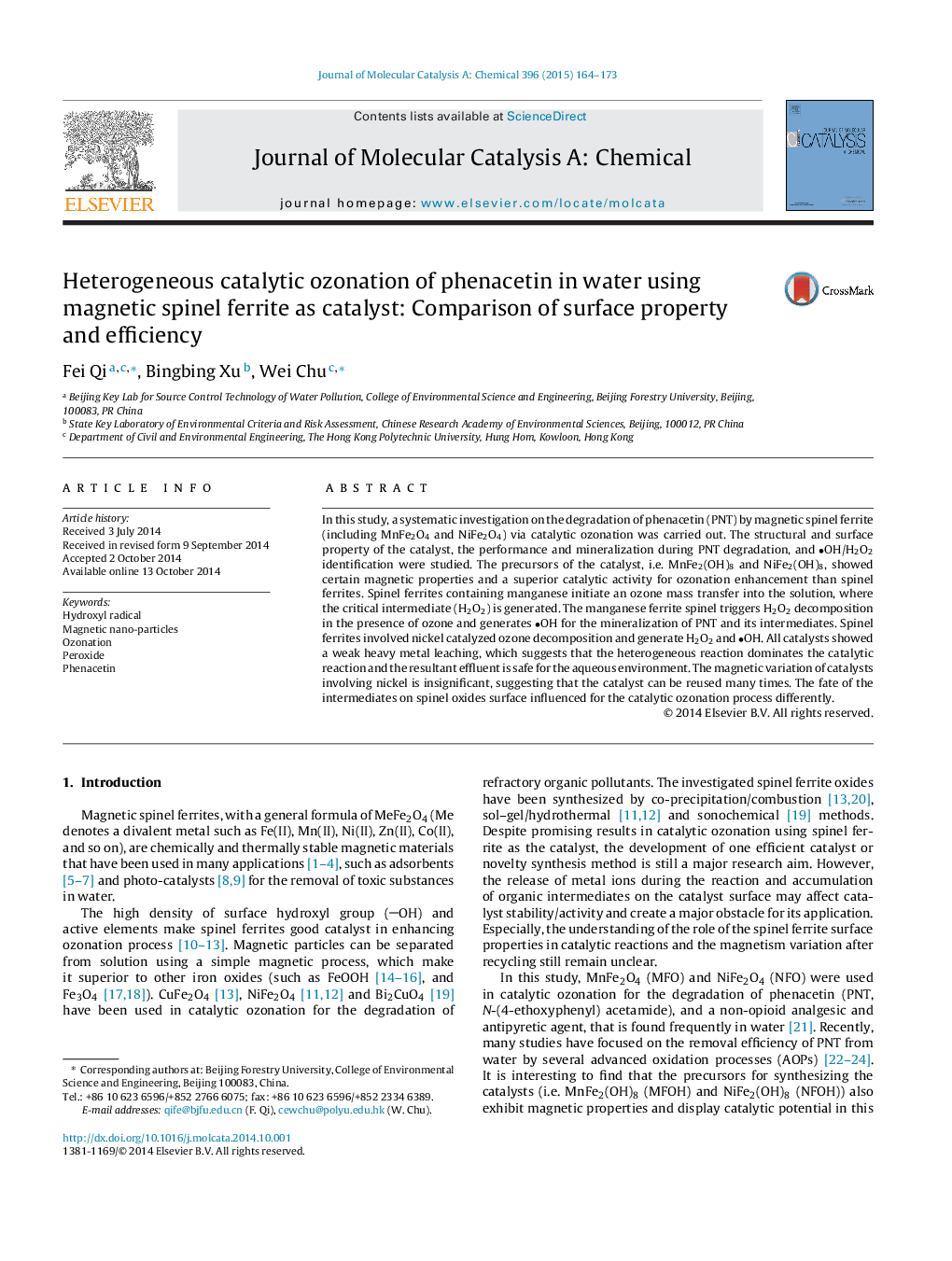| Article ID | Journal | Published Year | Pages | File Type |
|---|---|---|---|---|
| 65263 | Journal of Molecular Catalysis A: Chemical | 2015 | 10 Pages |
•Magnetic oxyhydroxides showed good efficiency and mineralization for phenacetin.•Surface property of magnetic oxides and its role in catalytic were identified.•Contributions of oxidant species were identified and quantified.
In this study, a systematic investigation on the degradation of phenacetin (PNT) by magnetic spinel ferrite (including MnFe2O4 and NiFe2O4) via catalytic ozonation was carried out. The structural and surface property of the catalyst, the performance and mineralization during PNT degradation, and •OH/H2O2 identification were studied. The precursors of the catalyst, i.e. MnFe2(OH)8 and NiFe2(OH)8, showed certain magnetic properties and a superior catalytic activity for ozonation enhancement than spinel ferrites. Spinel ferrites containing manganese initiate an ozone mass transfer into the solution, where the critical intermediate (H2O2) is generated. The manganese ferrite spinel triggers H2O2 decomposition in the presence of ozone and generates •OH for the mineralization of PNT and its intermediates. Spinel ferrites involved nickel catalyzed ozone decomposition and generate H2O2 and •OH. All catalysts showed a weak heavy metal leaching, which suggests that the heterogeneous reaction dominates the catalytic reaction and the resultant effluent is safe for the aqueous environment. The magnetic variation of catalysts involving nickel is insignificant, suggesting that the catalyst can be reused many times. The fate of the intermediates on spinel oxides surface influenced for the catalytic ozonation process differently.
Graphical abstractFigure optionsDownload full-size imageDownload high-quality image (173 K)Download as PowerPoint slide
